-
Category
Craniomaxillofacial Surgery
Orthopedic Surgery
Spine Surgery
Orthopedic Implants
Hip Surgery
Knee Surgery
Pectus Excavatum
Bone Graft
Disinfectants
Healthcare
what Orthopedic doctors do?
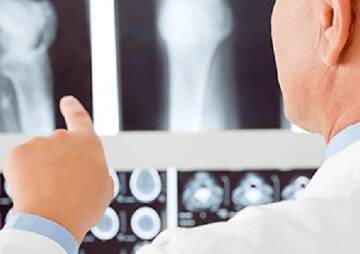
Many people ask what an orthopedic surgeon/doctor does, or what an orthopedic doctor treats. Orthopedic doctors use both surgical and non surgical means to treat musculoskeletal system, which include sports injuries, spine disorders, degenerative diseases, infections, tumors and congenital disorders.
Many people ask what an orthopedic surgeon does, or what an orthopedic doctor treats. Orthopedic doctors use both surgical and non surgical means to treat musculoskeletal system, which include sports injuries, spine disorders, degenerative diseases, infections, tumors and congenital disorders. In this article we will answer these questions and clearly show what orthopedic doctors do in detail. There are many surgical and non surgical treatments that an orthopedic surgeon/doctor uses to relieve a patient's pain, and here we briefly check these treatments. After answering questions "who is an orthopedic surgeon?" and "what an orthopedic doctor does?" we will check surgical techniques and non surgical therapies in detail. These Topics and techniques include: arthroscopy, fusion, internal fixation (implant fixators), joint replacements, osteotomy, soft tissue repair, and injections and pain management. These topics almost cover all activities that an orthopedic doctor does to treat a patient's painful part of the body's musculoskeletal system.
Who is an Orthopedic Doctor?
An Orthopedic Doctor is a specialist physician in diagnosis, treatment, prevention and rehabilitation of disorders, injuries and diseases of the musculoskeletal system of the body. Musculoskeletal system includes bones, nerves, joints, ligaments, and tendons. In other words when you have pain in your hand and wrist, foot and ankle, knee, shoulder and elbow, neck, back, and hips you should visit an orthopedic doctor.
Orthopedic doctors use both surgical and non-surgical means to treat the musculoskeletal system of your body. Non-surgical treatment could involve using medication, exercise and other rehabilitation or alternative therapies. Orthopedic doctors are specialized to treat all aspects of the musculoskeletal system, however many orthopedic doctors specialize in specific areas, such as hand, shoulder, elbow, spine, hip, knee or foot and ankle.
What does an Orthopedic Doctor do?
musculoskeletal pain is the number one reason why people visit doctors each year. There are many musculoskeletal conditions and injuries that can cause pain, and often orthopedic doctors can help reduce or eliminate pain. As you might know orthopedic doctors treat broken bones and replace painful joints, but they also treat patients with these problems:
- Sport injuries
- Back pain, ruptured disks and spinal stenosis
- Bone tumors
- Carpal tunnel, hand arthritis and hand injuries
- Club foot, bow legs and hip dysplasia
- Orhopedic trauma
- Limb lengthening
- Achilles tendon injuries, bunions and foot and ankle injuries
- Osteoporsis
- Arthritis
As you can see orthopedic doctors repair torn tendons and ligaments, and treat sprains and strains. They also might deal fractures and dislocations. They often advise patients on how to strengthen weakening muscles, and they perform surgeries. Some of these surgeries repair broken bones and soft tissues, others correct birth defects and injuries that develop because of a disease or an infection. But what orthopedic doctors do is not limited to these items. What do an orthopedic surgeon/doctor do? Here is the short answer:
- arthroscopy: a process using a camera to visualize inside the joint
- fusion: a process using internal devices or rods in which bones are fused together.
- Internal fixation: to hold broken pieces of bones together with either plates, screws, or pins.
- Joint Replacement: a process in which a damaged joint is removed and replaced by an artificial joint either partial, total, or revision.
- Osteotomy: the correction of bone deformity by cutting and repositioning the bone.
- Soft tissue repair: repair of tendons or ligaments.
- Injections and pain management.
In this list you can find a short answer about each activity. As you can see it is not so much detailed, and the tasks and activities of orthopedic doctors are not limited to these items.
Arthroscopy
Arthroscopy is a minimally invasive surgical procedure on a joint using an arthroscope, an endoscope that is inserted into the joint through a small incision, a procedure in which an examination and sometimes treatment of damage is performed. Its advantage over traditional open surgery is that the joint does not have to be opened up fully. This advantage reduces recovery time and may increase the rate of success due to less trauma to the connective tissue. It has gained popularity due to evidence of faster recovery times with less scarring, because of the smaller incisions.
The word arthroscopy comes from two Greek words, "arthro" (joint) and "skopein" (to look). The term literally means "to look within the joint."
arthroscopy has many types and is used to treat many parts of the body. These types of arthroscopy are more popular among the patients: Knee, Hip, Shoulder, Wrist, Spine, Temporomandibular joint.
Fusion
Another technique in orthopedic surgery is fusion which is used in spinal fusion and joint fusion treatments.
If the patient has a severe arthritis pain, his/her orthopedic doctor may suggest joint fusion surgery. This procedure fuses together the two bones that make up his/her aching joint. It causes the bones to become one solid bone, and it can lessen the pain. It can also make the joint more stable and help the patient to bear more weight on it.
Joint fusion surgery can be done on many different joints, such as: Spine, Ankles, Wrists, Fingers, Thumbs, and Feet.
It can take a while – sometimes many months – to heal from joint fusion surgery, and orthopedic doctors before using fusion surgery make the patient aware of its recovery time.
Internal fixation and orthopedic implants
Internal fixation is an operation in orthopedics that involves the surgical implementation of orthopedic implants for the purpose of repairing a bone. In this operation an internal fixator is used which may be made of stainless steel, titanium alloy, or cobalt-chrome alloy. These fixators are in three major types:
- Plate and screws
- Kirschner wires
- Intramedullary nails
Internal fixation surgeries are done in two ways: Open Reduction Internal Fixation (ORIF) and Closed Reduction Internal Fixation (CRIF). Open Reduction here refers to open surgery to set bones as is necessary for some fractures. Internal fixation here refers to fixation of screws and/or plates, intramedullary rods and other devices to enable or facilitate healing.
Closed Reduction internal fixation (CRIF) is reduction without any open surgery, followed by internal fixation.
Joint replacement/ Implant replacement
Replacement arthroplasty or joint replacement surgery is a procedure of orthopedic surgery in which an arthritic or dysfunctional joint surface is replaced with an orthopedic prosthesis. When severe joint pain or dysfunction is not alleviated by less-invasive therapies, Joint replacement is considered by orthopedic doctors as a treatment.
Joint replacement is used for many joint pains like Shoulder, Hip, Knee, Ankle, and Finger. The prosthesis material used in the joint replacement surgeries could be metal, ceramic, or alloys. Some ceramic materials commonly used in joint replacement are alumina, zirconia, silica, hydroxyapatite, titanium nitride, and silicon nitride. Orthopedic doctors decide about which material should be used.
Osteotomy
An osteotomy, in short, is any surgery that cuts and reshapes bones. This type of procedure is used by orthopedic doctors to repair a damaged joint. It's also used to shorten or lengthen a deformed bone that doesn't match with a joint like it should.
Osteotomy is one orthopedic method to relieve pain of arthritis, especially of the hip and knee. This procedure can fix problems in many different bones and joints, such as: Hip, Knee, Spine, Jaw, Big toe, and Chin.
Due to the serious nature of this procedure, recovery may be extensive. Careful consultation with an orthopedic doctor is important in order to ensure proper planning of non-surgical therapies during a recovery phase.
Soft tissue repair
Soft tissue includes the tissues that connect, support, or surround other structures and organs of the body, not being hard tissue such as bone. Soft tissues include tendons, ligaments, fascia, skin, fibrous tissues, fat, and synovial membranes (which are connective tissue), and muscles, nerves and blood vessels.
A soft tissue injury is the damage of ligaments, muscles and tendons of the hip, knee, shoulder and elbow joint. A soft tissue injury usually occurs from a strain, sprain and continuous use of a particular part of the body and it can result in swelling, pain, bruising and loss of function. To cure soft tissue injury, the soft tissue repair procedure is used by orthopedic doctors.
Injections and pain management
Orthopaedic injections deliver medication to a specific area of the body to assist in reducing or eliminating pain. Injections may not completely eliminate all severe orthopaedic pain symptoms, be it immediately or permanently, but they can serve to significantly aid in pain reduction and allow increased comfort and function with activities of daily living.
There are four major types of orthopedic injections used by orthopedic doctors:
- Anti-inflammatory injections: this type of injection offers quick relief for inflammation and is most commonly used in wrist, spine, shoulder, knee, hip, elbow or ankle.
- Viscosupplementation injections: the injection goes directly into the joint, decreasing friction during movement and reducing pain associated with osteoarthritis while improving the range of motion of the joint.
- Platelet-rich plasma (PRP) injections: PRP therapy uses injections of a patient's own platelets to accelerate the healing of injured joints, tendons and soft tissues. Specific conditions that can be treated with PRP include: Osteoarthritis, Tendonitis/chronic tendon injuries, back and spine conditions, nerve damage and injury, ligament and muscle injuries, and non-healing wounds.
- Stem cell injections: stem cell injections use a patient's own stem cells to treat osteoarthritis and soft tissue injuries. This type of treatment is located at the forefront of non-surgical orthopedic treatments. Regenerative stem cells are harvested from a patient's bone marrow in the pelvis or hip bone. These cells can help rebuild soft tissue, cartilage and bone, making them an excellent resource for speeding up the healing process and improving overall function.
References : orthoinfo.aaos , webmd

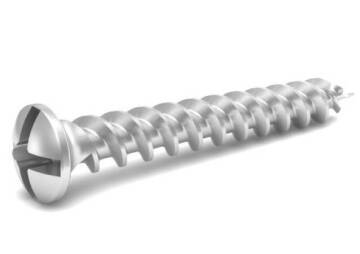
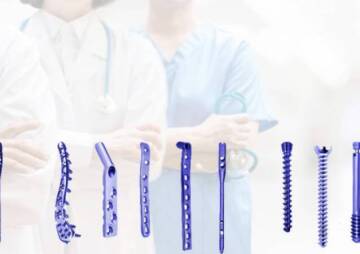

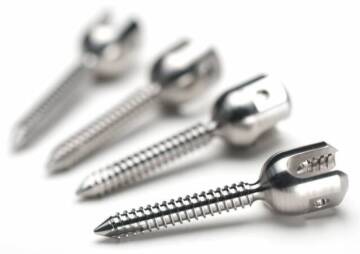
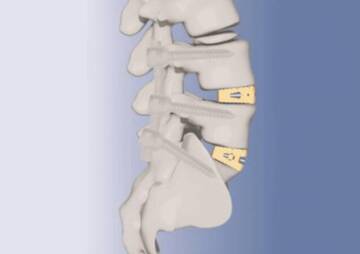
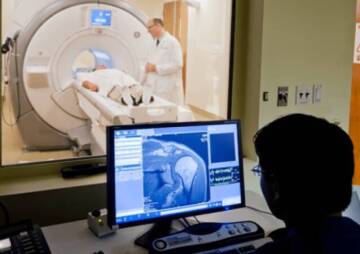
Absolutely right. Thank you very much for your advice
I appreciate you helping me to understand that orthopedic doctors work to help solve problems with nerves. I think I am having an issue with the nerves in my feet. It seems like it would be a good idea for me to find an orthopedist to work with.I appreciate you helping me to understand that orthopedic doctors work to help solve problems with nerves. I think I am having an issue with the nerves in my feet. It seems like it would be a good idea for me to find an orthopedist to work with.
the doctor should recommend orthopedic patients To prevent injury, people should do warm-ups before playing sports, which would include a light jog and stretching. The hamstrings and the quadriceps as well as other muscles should be stretched. That way, the first time you fire a muscle in a burst, such as in a run, it won’t tear. Exercise is great, but a few words of caution might be warranted for those who spent the snowy winter and wet spring in hibernation.